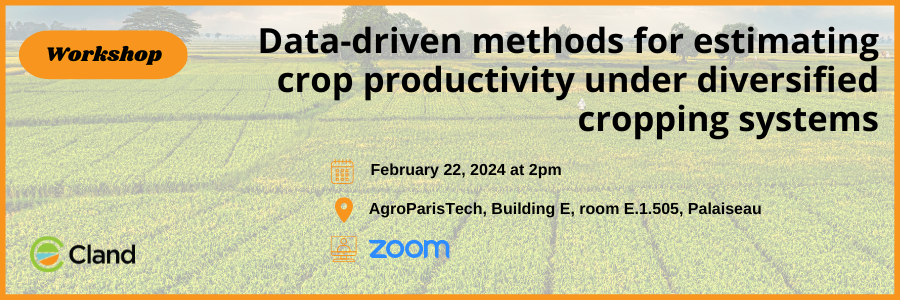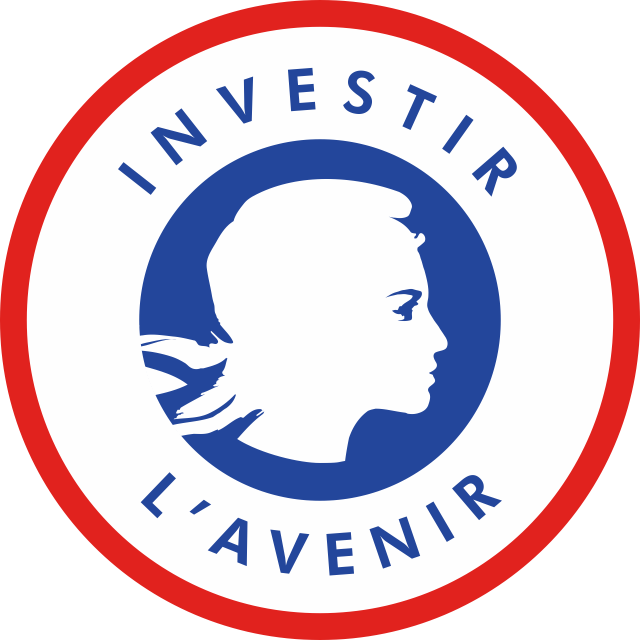Mini-Workshop on Data-driven methods for estimating crop productivity under diversified cropping systems
Agenda :
- 14:00-14:15: David Makowski.
Welcome and scope of the mini-workshop
Due to the high level of political instability and the increasing frequency of extreme weather events, agricultural production is becoming highly variable, both in space and time, making it difficult to predict. In this context, it is becoming crucial not only to improve the reliability of predictions of agricultural production levels, but also to identify adaptation strategies offering alternative modes of production likely to improve our levels of food security. In this workshop, we show how modern data-driven modelling techniques and new sources of information can be used to meet these challenges.
- 14:15-15:00: Mathilde Chen
Is concurrent production of soybean and maize possible in Europe?
Simultaneous cultivation of multiple crops in the same field, defined as intercropping, is considered as a lever to increase efficiency of land use while increasing agricultural productivity. However, the potential contribution of intercropping to improve proteins self-sufficiency in the European Union has not been studied. Based on machine learning models trained on historical yield and climate data, we forecast soybean productivity and then optimize allocation of this crop in the continent to improve European self-sufficiency. The required areas to reach various levels of self-sufficiency are estimated considering two contrasting production systems: (i) soybean intercropped with maize in the same fields, (ii) soybean and maize grown as sole crops in separate fields. We assess the quantity of soybean and maize produced in each system and identify strategies able to maximize the co-production of both crops in Europe.
- 15:00-15:45: Mohsen Davoudkhani
Perspectives for expanding sorghum production in Europe in the face of climate change
Sorghum production is increasing in Europe. This is due to sorghum's greater heat tolerance compared with other crops, particularly maize, making it a promising crop that could potentially be used as a substitute for maize in the context of climate change. In this study, we aimed to investigate the feasibility of expanding sorghum cultivation in Europe under current and future climatic conditions using a machine-learning model. We also explored the possibility of replacing maize with locally-produced sorghum for feeding livestock in Europe. The results show that sorghum yields could decrease in southern Europe but increase in the north. The findings reveal that if sorghum was grown in one out of three years (respectively, one out of six years), at least 90% (respectively, 45%) of maize used as livestock feed could be replaced by sorghum in Europe.
- 15:45-16:00: Break
- 16:00-16:45: Yang Su
Future warming increases feasibility of maize-wheat double cropping in Europe
Double cropping, harvesting two crops annually, emerges as a strategy to mitigate food insecurity, and potentially favored by global warming through faster plant growth and shorter seasons. In this study we evaluated the viability of double cropping maize and wheat in Europe under climate change, employing a novel approach that integrates a process-based model with machine learning. Findings suggest that the suitable area for double cropping in Europe expected to expand 3.6 times by 2100, driven by warming trends (2.6 to 4.8°C). And this practice could compensate for the caloric losses in traditional maize-wheat rotations due to climate change. Specifically, in Southern Europe, double cropping may boost calorie production by 27.3%, underscoring its role as an effective adaptation strategy for European agriculture.
- 16:45-17:30: Hassan Bazzi
New Sentinel-2 derived Gross Primary Production: model optimization and a validation with wheat yields predictions
In Europe, the heterogeneous features of crop systems with majority of small to medium sized agricultural holdings, and diversity of crop rotations, require high-resolution information to estimate cropland gross primary production. In this context, our work presents an assimilation of high-resolution Sentinel-2 satellite data with eddy covariance measurements of CO2 fluxes at selected European cropland flux sites in a new modified version of a satellite data driven Vegetation Photosynthesis Respiration Model (VPRM). The proposed modified VPRM model improves the simulation of cropland CO2 fluxes in Europe by replacing conventionally used MODIS satellite data at 500 m spatial resolution by the Sentinel-2 vegetation indices at 10 m spatial resolution to address the complex heterogenic feature of the European cropping system. Main results showed improved performance of Sentinel-2 over MODIS for European cropland fluxes and significant enhancement in the CO2 fluxes simulations using the modified version of the VPRM especially when optimizing the model per crop-type (wheat, corn, sunflower, barley, etc.). Comparison between the GPP anomalies and the national statistical wheat yields anomalies showed a significant spatio-temporal correlation at both national scales and departmental scales.




